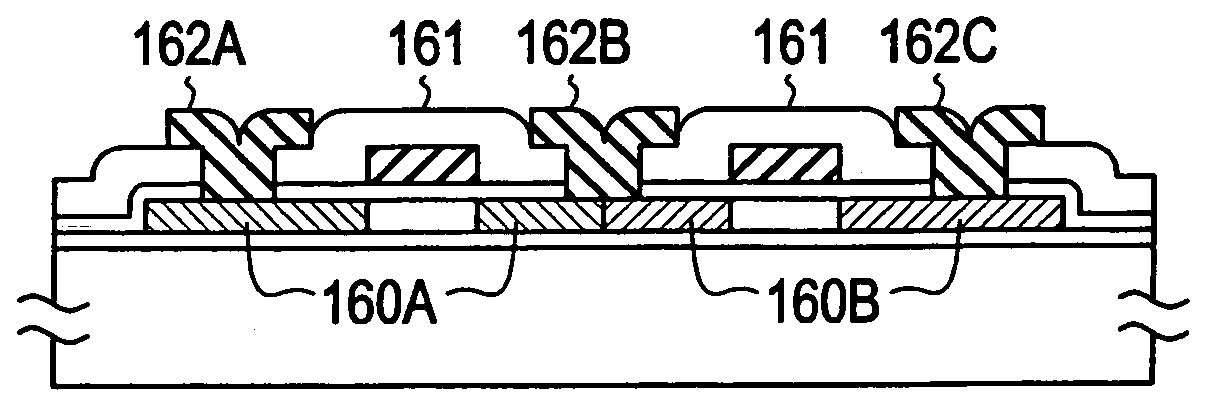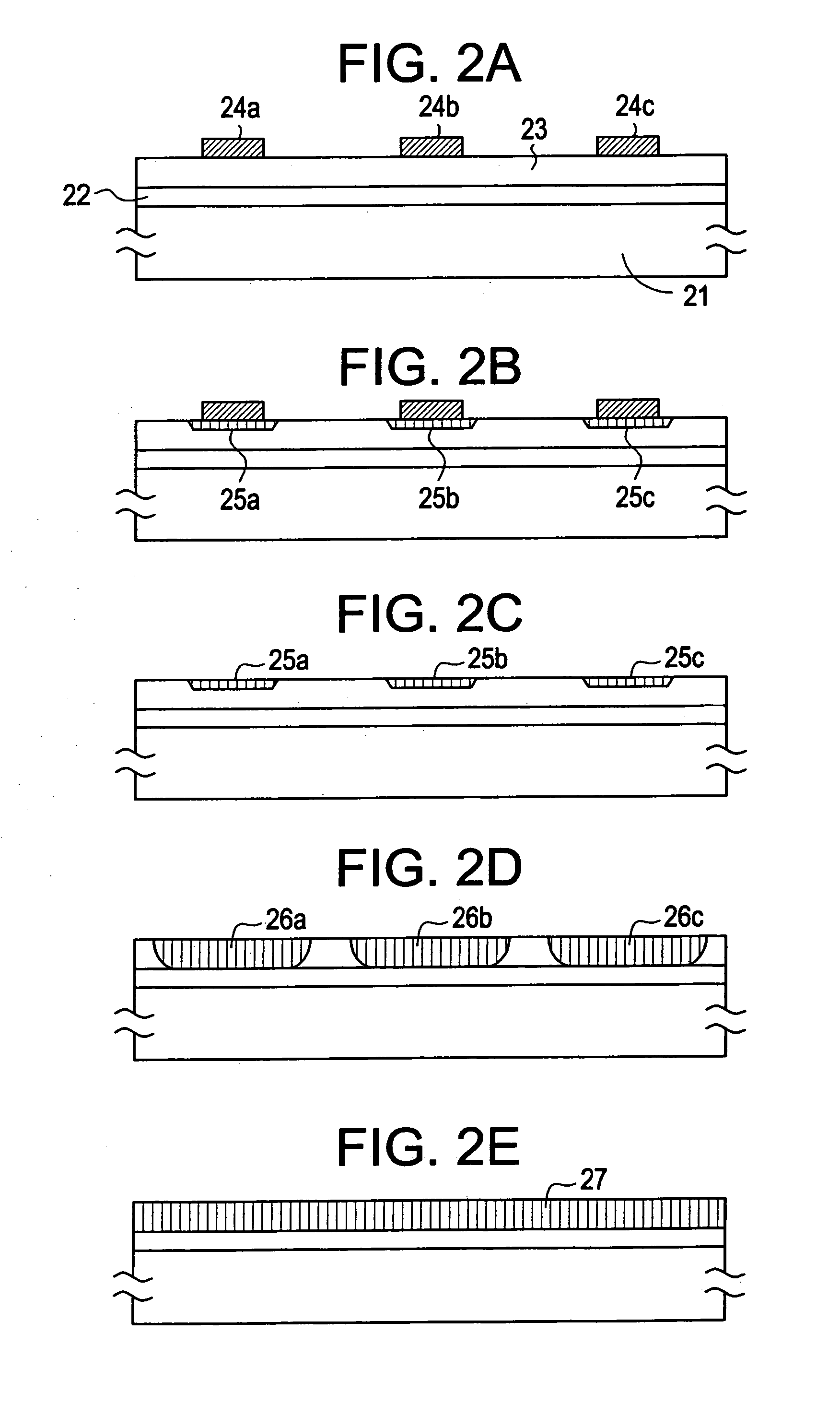Semiconductor, semiconductor device, and method for fabricating the same
a semiconductor and semiconductor technology, applied in the direction of crystal growth process, gel state, polycrystalline material growth, etc., can solve the problems of inability to achieve crystal growth progress, large amount of energy required, and conventional solid phase epitaxial crystallization did not provide an answer to this problem, etc., to achieve excellent crystallinity, increase temperature, and shorten the time necessary for crystal growth
- Summary
- Abstract
- Description
- Claims
- Application Information
AI Technical Summary
Benefits of technology
Problems solved by technology
Method used
Image
Examples
example 1
[0053]Referring to FIG. 1, a process for fabricating a crystalline silicon film by forming a nickel film on a Corning #7059 substrate, and crystallizing an amorphous silicon film using this nickel film is described below. By using plasma CVD, a 2,000 Å thick silicon oxide film 12 as a base film was deposited on the substrate 11, and further thereon an amorphous silicon film 13 at a thickness of from 500 to 3,000 Å, for example, at a thickness of 1,500 Å. After removing hydrogen from the film by keeping the film at a temperature of 430° C. for a duration of from 0.1 to 2 hours, for example, 0.5 hour, a nickel film 14 was deposited thereon by sputtering at a thickness of from 100 to 1,000 Å, for example, 500 Å. A favorable nickel film can be obtained by heating the substrate in the temperature range of from 100 to 500° C., preferably in the range of from 180 to 250° C., because a nickel film having an improved adhesion strength with respect to the silicon film formed as the base is ob...
example 2
[0057]Referring to FIG. 2, a process for fabricating a crystalline silicon film is described below. A 2,000 Å thick silicon oxide film 22 as a base film was deposited on a Corning #7059 glass substrate 21, and an amorphous silicon film 23 was deposited further thereon at a thickness of from 500 to 3,000 Å, for example, at a thickness of 500 Å and 1,500 Å. After removing hydrogen from the film by keeping the film at a temperature of 430° C. for a duration of from 0.1 to 2 hours, for example, 0.5 hour, a nickel film was deposited thereon by sputtering at a thickness of from 100 to 1,000 Å, for example, 500 Å. A nickel silicide film can be used in the place of the nickel film. The nickel film thus obtained was etched to form patterns 24a, 24b, and 24c as shown in FIG. 2(A).
[0058]Then, the structure was heated in the temperature range of from 450 to 580° C. for a duration of from 1 to 10 minutes to allow the nickel films 24a to 24c to undergo reaction with the amorphous film 23 to form ...
example 3
[0063]The present example relates to a process for fabricating a silicon film having an improved crystallinity by irradiating a laser beam to the silicon film after once crystallizing it by heating. Furthermore, the present example provides a process for fabricating a TFT using the thus crystallized silicon film.
[0064]FIG. 6 shows the cross section view of the step-sequential structures obtained in the present process. Referring to FIG. 6, a 2,000 Å thick silicon oxide film 602 as a base film was deposited on a Corning #7059 glass substrate 601, and an intrinsic (I type) amorphous silicon film was deposited further thereon at a thickness of from 100 to 1,500 Å, for example, at a thickness of 800 Å in this case. A nickel film, i.e., a catalytic material for accelerating the crystallization of the amorphous silicon, was deposited selectively thereon by a process similar to that described in Example 2 (refer to FIG. 2(A)). The resulting structure was then heated in the temperature rang...
PUM
| Property | Measurement | Unit |
|---|---|---|
| temperature | aaaaa | aaaaa |
| temperature | aaaaa | aaaaa |
| temperature | aaaaa | aaaaa |
Abstract
Description
Claims
Application Information
 Login to View More
Login to View More - R&D
- Intellectual Property
- Life Sciences
- Materials
- Tech Scout
- Unparalleled Data Quality
- Higher Quality Content
- 60% Fewer Hallucinations
Browse by: Latest US Patents, China's latest patents, Technical Efficacy Thesaurus, Application Domain, Technology Topic, Popular Technical Reports.
© 2025 PatSnap. All rights reserved.Legal|Privacy policy|Modern Slavery Act Transparency Statement|Sitemap|About US| Contact US: help@patsnap.com



